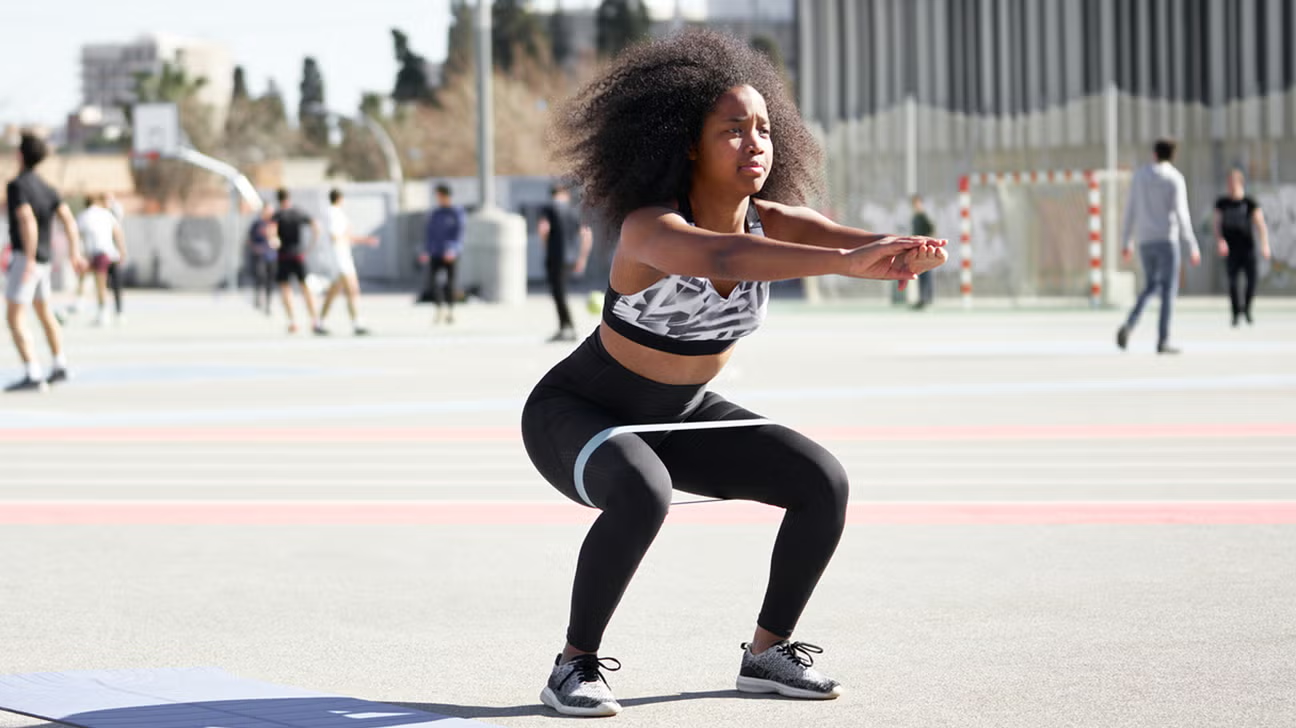
After a butt lift procedure, the priority shifts from surgical shape to muscular support and stability. Maintaining volume without adding excess fat requires a targeted approach. Basic cardio alone won’t be sufficient. The focus should be placed on resistance-based movements that engage gluteal muscles consistently. Squats, lunges, and bridges build and preserve tissue structure. But frequency and intensity must be adjusted gradually. Too much too soon can lead to strain, especially after a recent procedure. Recovery timelines vary, so consultation with a fitness professional is advised before starting. Light resistance with body weight can be an effective starting point in the early stages. As strength improves, load can be added using dumbbells or resistance bands to encourage continued growth without fat accumulation.
Movements that isolate glute muscles prevent surrounding areas from compensating
Glute isolation is a key concept when trying to maintain a specific contour or lifted effect. In many workouts, stronger muscles like quads or hamstrings tend to take over. This reduces the tension placed directly on the glutes, leading to slower results. To avoid this, exercises like donkey kicks or fire hydrants are useful. These limit momentum and emphasize a controlled contraction of the gluteus maximus. Slow, deliberate repetitions help prevent secondary muscles from interfering. Engaging the glutes fully requires awareness of posture and balance during each repetition. An unstable core or arched back often shifts the load away from the target. Practicing form with minimal resistance first can correct compensations before heavier training resumes. This also minimizes the risk of developing muscle imbalances.
Resistance bands create tension that increases muscle endurance without adding bulk
Using resistance bands is a simple and effective way to keep the glutes activated throughout the week. They add consistent tension across the full range of motion, especially during bodyweight exercises. Bands are also portable and allow workouts to happen anywhere without machines. Clamshells and lateral walks are especially effective when bands are placed above the knees. They increase tension during hip abduction and glute medius activation. Over time, banded training builds endurance without excessive muscle size. This is important for those who prefer maintaining lift without expanding glute dimensions. It’s also ideal for early recovery phases where high-impact movements are restricted. Resistance bands can also complement weighted routines by intensifying warm-ups or cooldowns.
Weight training enhances the gluteal shape but should be introduced with caution
Weight-based glute exercises offer direct hypertrophy benefits but must be used strategically. Barbell squats, hip thrusts, and deadlifts are powerful for increasing definition and maintaining volume. However, they require strong form and body awareness to avoid injury or imbalance. New lifters often struggle with technique, especially when transitioning from low-intensity rehab movements. Progression must be steady and customized to the individual’s strength level and healing process. Overloading too early can disrupt surgical outcomes and strain connective tissues. Spotting and supervised sessions with a certified trainer can ensure safety. Most programs alternate heavy and light days to allow recovery without muscle loss. Correct breathing and muscle engagement also reduce pressure on the lower back and core.
Stretching routines prevent stiffness and support long-term range of motion
A neglected part of post-surgical fitness routines is flexibility and mobility. Glute-focused exercises tend to create tightness in the hips, hamstrings, and lower back. This limits mobility over time and increases injury risk. Dynamic stretches before workouts and static stretches afterward are essential. Pigeon pose, forward folds, and spinal twists can loosen the surrounding muscle groups. Foam rolling also reduces tissue tension and speeds up recovery between strength sessions. Flexibility work shouldn’t be skipped just because it doesn’t build muscle. Maintaining range of motion ensures proper technique during workouts and helps preserve natural glute movement. When muscles become too tight, contractions become shorter and less effective, directly impacting glute lift retention.
Cardio should support recovery without compromising glute muscle mass
Cardio is important for circulation and overall health but must be balanced with muscle preservation goals. High-impact activities like long-distance running can cause muscle breakdown in glutes if done excessively. Instead, choose moderate, low-impact cardio options like cycling, incline walking, or stair climbing. These still activate the glutes while improving endurance and heart function. Frequency should be adjusted based on recovery stage and training goals. Two to three sessions per week are typically enough to support fat regulation without loss of muscle tone. Cardiovascular training also helps regulate hormones like cortisol that may affect recovery and muscle retention. It’s best used as a supplement to strength-focused routines, not a replacement.
Consistent training is more effective than short bursts of intense activity
Maintaining glute lift results doesn’t require maximum effort every day but demands consistent commitment over time. Short-term intense training can lead to burnout, poor recovery, and skipped workouts. Instead, a structured weekly routine with varied exercises ensures long-term retention and shape preservation. Recovery days are just as important as training days, allowing muscles to repair and strengthen. Overtraining leads to fatigue, injury, or even muscle loss. A good balance includes two to three strength sessions per week and one or two cardio or mobility days. Consistency also reinforces neuromuscular control, improving your body’s ability to engage the correct muscles. This helps avoid compensatory patterns that degrade form and glute engagement.
Nutrition plays a supporting role by maintaining lean muscle and regulating inflammation
Post-surgical and post-training results rely heavily on diet. Protein intake supports muscle repair and retention, especially during early recovery. Without adequate protein, glute muscles may shrink over time, reducing the visible lift effect. Carbohydrates help restore glycogen used during training and maintain energy for continued activity. Fats regulate hormones that influence tissue growth and recovery speed. Avoiding processed food and maintaining a balanced intake reduces systemic inflammation. Hydration is equally essential. Dehydrated muscles contract poorly and recover slowly, which can limit training frequency and performance. Strategic supplementation, if recommended by a provider, may also support collagen production and joint function.
Rest and sleep help consolidate training efforts and muscle regeneration
Training without rest delays recovery and increases the risk of performance plateau. Sleep is when the body repairs muscle tissues and regulates recovery hormones. Less than seven hours per night can impair these processes, leading to muscle fatigue and poor retention of surgical outcomes. Sleep also affects coordination and motivation, which impact workout quality and consistency. If you’re lifting weights or engaging in intense glute work, aim for deep, uninterrupted sleep. Rest days between heavy workouts should be respected. Passive recovery techniques like contrast baths, stretching, and massage further support healing without strain. Quality rest keeps muscles strong, engaged, and responsive.
Long-term progress depends on individual adaptation and sustained technique
Maintaining results over months and years requires adjustments as the body changes. Glute training should evolve with strength, flexibility, and lifestyle. Plateaus are natural and may require a shift in movement selection, resistance level, or frequency. Logging workouts can help track what’s effective and where adjustments are needed. Self-assessment and occasional professional evaluations ensure form and muscle activation remain aligned with goals. Everyone responds differently to training, so routines should reflect those differences rather than copying popular online programs. Over time, discipline replaces motivation, and well-maintained habits sustain the butt lift effect far longer than any short-term plan.
Source: Butt Lift in Dubai / Butt Lift in Abu Dhabi
